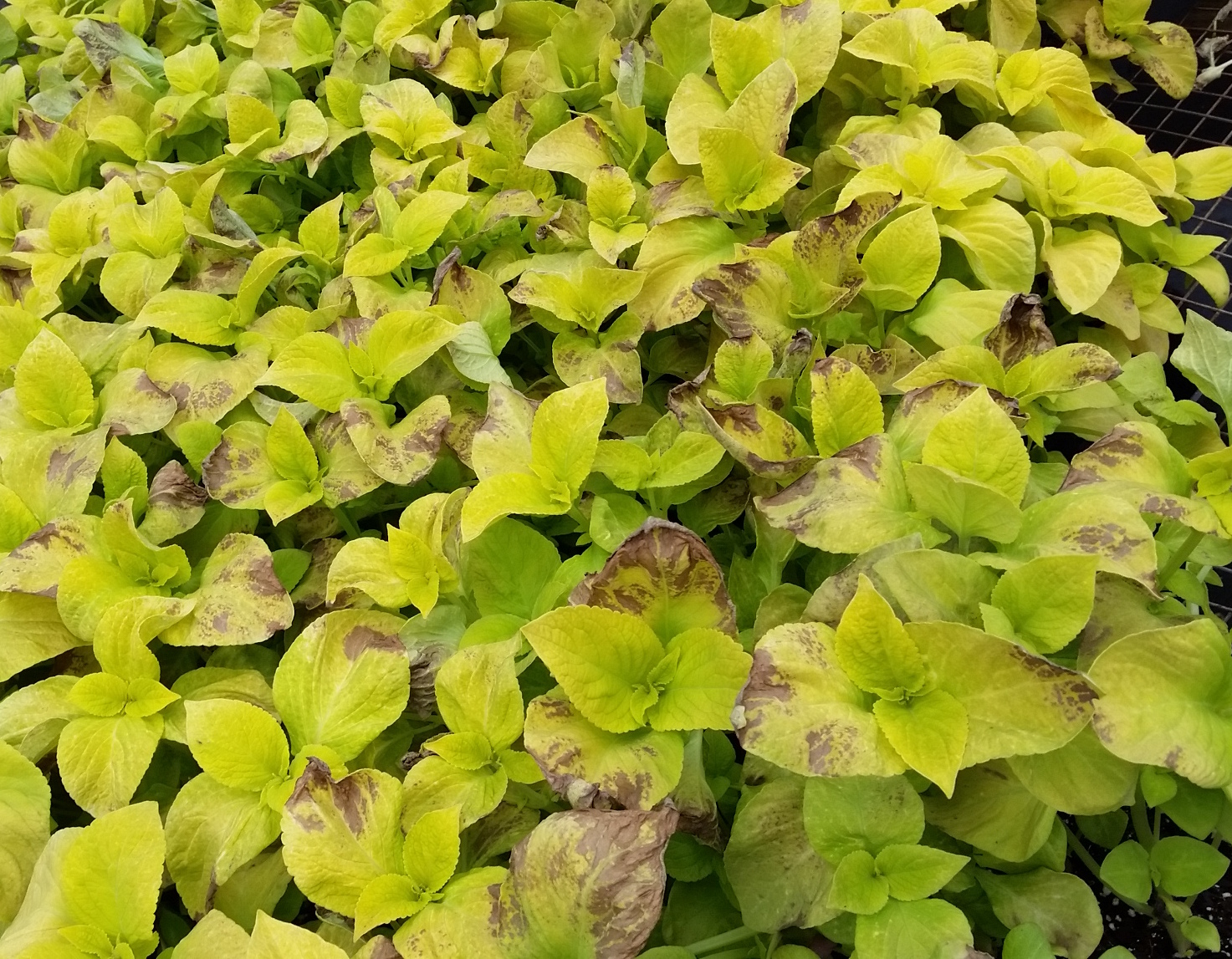Downy Mildew on Coleus: Update
go.ncsu.edu/readext?408742
en Español / em Português
El inglés es el idioma de control de esta página. En la medida en que haya algún conflicto entre la traducción al inglés y la traducción, el inglés prevalece.
Al hacer clic en el enlace de traducción se activa un servicio de traducción gratuito para convertir la página al español. Al igual que con cualquier traducción por Internet, la conversión no es sensible al contexto y puede que no traduzca el texto en su significado original. NC State Extension no garantiza la exactitud del texto traducido. Por favor, tenga en cuenta que algunas aplicaciones y/o servicios pueden no funcionar como se espera cuando se traducen.
Português
Inglês é o idioma de controle desta página. Na medida que haja algum conflito entre o texto original em Inglês e a tradução, o Inglês prevalece.
Ao clicar no link de tradução, um serviço gratuito de tradução será ativado para converter a página para o Português. Como em qualquer tradução pela internet, a conversão não é sensivel ao contexto e pode não ocorrer a tradução para o significado orginal. O serviço de Extensão da Carolina do Norte (NC State Extension) não garante a exatidão do texto traduzido. Por favor, observe que algumas funções ou serviços podem não funcionar como esperado após a tradução.
English
English is the controlling language of this page. To the extent there is any conflict between the English text and the translation, English controls.
Clicking on the translation link activates a free translation service to convert the page to Spanish. As with any Internet translation, the conversion is not context-sensitive and may not translate the text to its original meaning. NC State Extension does not guarantee the accuracy of the translated text. Please note that some applications and/or services may not function as expected when translated.
Collapse ▲Coleus downy mildew (Peronospora sp.) has been detected in a greenhouse in North Carolina. Although this disease is not new to North Carolina, this serves as a reminder to scout regularly, particularly in the spring when temperatures are cool and humidity is high, as it can spread rapidly through a greenhouse.

Symptoms of coleus downy mildew on leaves, George Place, Catawba County, N.C. Cooperative Extension Service
Symptoms include irregular blotches on the leaves that may be angular in shape (but not always), foliage drop, and stunting and can occur at any stage of growth. Spores may be evident on the underside of the leaves as a fuzzy mat that is gray-purple to gray-black in color. Sporulation is more likely to be encountered under favorable conditions. A hand lens under adequate light may be necessary to see the spores. However, plants that do not show symptoms also may be infected.
To manage the disease, increase ventilation in greenhouses to reduce humidity and allow adequate space between plants to promote air circulation. Cultivars vary in susceptibility, as tested by Cornell University and Michigan State University, and a summary can be found here.
Preventative fungicide applications combined with the use of less susceptible varieties can provide adequate management. Some examples of commercial fungicides that are effective include: dimethomorph (Stature), azoxystrobin (Heritage), mefanoxam (Subdue Maxx), mancozeb (Protect), and copper-based fungicides. As always, read and follow label instructions on all pesticides including alternating fungicides in the same FRAC group.
To prevent disease from getting started, ensure that plants coming into the greenhouse are healthy (although this can be difficult if plants have latent infections). Keep new plants quarantined in a separate room, if possible, to be sure disease does not appear. Remove and destroy or bury all coleus at the end of the season as these plants can provide a harbor for the disease into the next year. Avoid landscape plantings of coleus near the greenhouse.
For more information, there are multiple articles available on this subject below.
Facing the downy mildew dilemma, Greenhouse Product News
Diagnosing and Treating Coleus Downy Mildew, Greenhouse Product News
This article was prepared with assistance from Mike Munster, Plant Disease and Insect Clinic, and Dr. Brian Whipker, Department of Horticultural Science.


